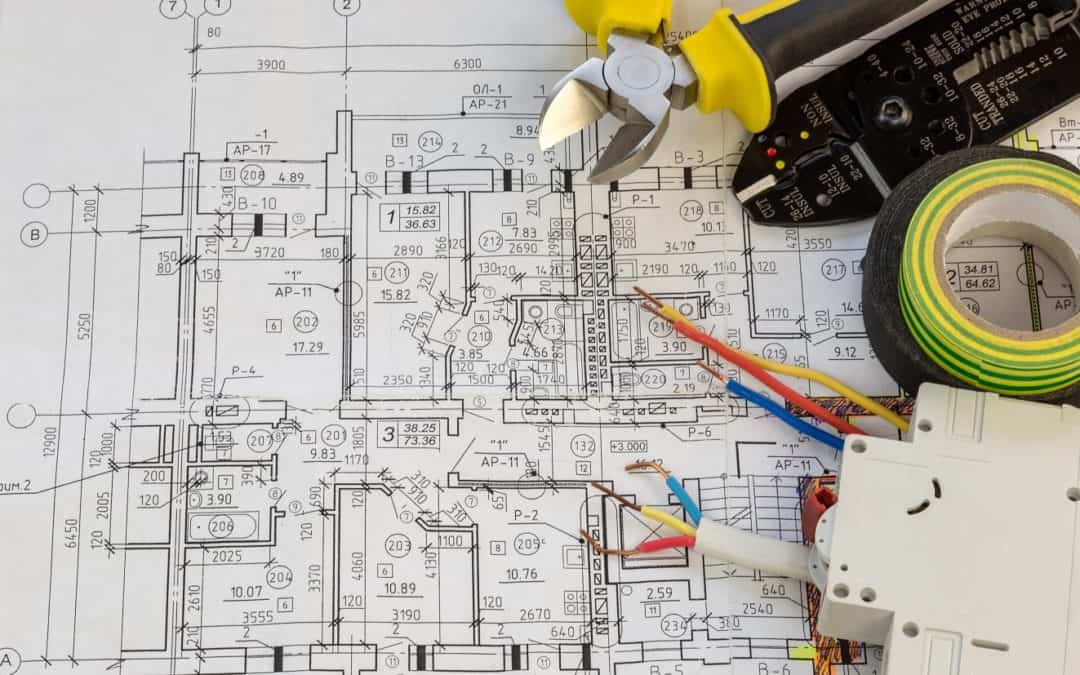Tailored Electrical Load Calculation Services for Commercial and Industrial Facilities
Tailored Electrical Load Calculation Services for Commercial and Industrial Facilities
Blog Article
Cutting-edge Electric Design Services for Modern Framework
The advancement of modern-day facilities requires ingenious electrical design solutions that not just enhance operational efficiency however also address sustainability challenges. As city environments expand increasingly intricate, integrating innovations such as smart grids and renewable energy resources becomes extremely important. These innovations not only assure to optimize power intake but likewise foster resilience versus future needs. The landscape of electrical design is undergoing rapid change, motivating a better examination of arising fads and their effects for lasting facilities feasibility. What might the future hold for those that welcome these innovative methods?
Significance of Ingenious Electric Design
Ingenious electric design plays a crucial role in modern infrastructure, affecting not just effectiveness but also sustainability. As cities advance and the demand for energy boosts, the need for advanced electrical systems ends up being critical. These systems should not only meet existing needs but also expect future development and technological advancements.
A well-executed electric design can considerably lower power intake, thus lowering functional costs and decreasing environmental impact. By including renewable resource sources, such as photovoltaic panels and wind turbines, cutting-edge designs can improve energy independence and strength. Furthermore, clever grid innovations allow for real-time monitoring and management of energy circulation, enhancing performance and reducing waste.
Safety and security is one more crucial aspect of electrical design. Carrying out innovative technologies and extensive standards can mitigate risks connected with electrical failures, ensuring a protected environment for locals and services alike. Furthermore, cutting-edge styles facilitate flexibility, permitting frameworks to integrate arising technologies flawlessly.
Secret Trends in Electrical Design
As the landscape of electrical design continues to evolve, a number of vital fads are forming the future of the sector. One significant fad is the assimilation of smart modern technology right into electrical systems. The spreading of the Net of Things (IoT) has actually allowed real-time surveillance and control of electric tools, improving performance and facilitating anticipating maintenance.
An additional fad is the growing emphasis on modular design. This approach allows for adaptable and scalable services, allowing framework to adjust to transforming needs without substantial renovations. Additionally, making use of sophisticated simulation tools and Building Information Modeling (BIM) is coming to be increasingly widespread, streamlining the design process and improving cooperation amongst stakeholders.
Moreover, improvements in materials science are resulting in the advancement of lighter, much more resilient, and energy-efficient parts. This innovation is especially vital for high-performance structures and infrastructure jobs.
Lastly, there is a significant change in the direction of data-driven decision-making - electrical design services. Leveraging information analytics aids developers enhance systems for performance and cost-effectiveness. With each other, these patterns symbolize a transformative period in electric design, enhancing capability, sustainability, and durability in modern-day infrastructure
Sustainable Power Solutions
Sustainable power solutions are progressively ending up being a crucial emphasis in electrical design, mirroring a wider commitment to environmental obligation and source efficiency. These options aim to decrease ecological effect while enhancing power usage in different infrastructures, from household structures to big commercial centers.
One of the primary approaches includes the assimilation of eco-friendly energy resources, such as photovoltaic panels and wind generators, into electrical systems. This not only decreases reliance on nonrenewable fuel sources but additionally boosts power resilience. In addition, ingenious power storage systems, such as sophisticated batteries, enable effective management and circulation of power, making sure that surplus power created throughout height production can be used during high need periods.
Moreover, energy-efficient design methods are being taken on to improve total system efficiency. This includes utilizing energy-efficient lighting, a/c systems, and clever building technologies that adjust and keep an eye on power usage based upon occupancy and ecological conditions.
Smart Grid Technologies
The execution of sustainable power solutions normally results in the exploration of smart grid innovations, which play a pivotal duty in improving electrical systems. Smart grids leverage progressed communication modern technologies and data analytics to boost the dependability, performance, and sustainability of electrical energy circulation. By integrating electronic innovation with standard grid facilities, these systems promote real-time monitoring, automated control, and boosted decision-making capabilities.
One of the crucial functions of wise grids is their capability to fit renewable power resources, such as solar and wind power. This versatility not only minimizes dependence on nonrenewable fuel sources but additionally permits for a much more decentralized energy production version. Moreover, clever grids enable need action programs, where customers can adjust their power use based upon real-time prices, thereby advertising energy preservation and lowering peak tons demands.
Additionally, smart grid technologies boost grid durability by allowing quicker recognition and resolution of blackouts, inevitably reducing downtime. With predictive maintenance and analytics, energies can enhance and enhance operations solution delivery. As neighborhoods and cities remain to evolve, clever grid innovations are necessary for constructing a effective and sustainable electrical infrastructure that fulfills the needs of contemporary society.

Future-Proofing Infrastructure
To make certain lasting stability and versatility, future-proofing facilities is vital in the swiftly developing landscape of electric design solutions. As technology advancements and power demands shift, it is essential that electric systems are created with versatility in mind. This requires including scalable remedies that can accommodate future upgrades without demanding extensive overhauls.

Additionally, sustainability must be a keystone of future-proofed layouts. Utilizing renewable power sources, such as solar and wind, and optimizing energy efficiency decrease reliance on nonrenewable fuel sources, aligning with international efforts to combat climate modification.
Verdict
Finally, ingenious electric design services play a critical role fit contemporary framework. By prioritizing sustainability, efficiency, and versatility, these solutions address the progressing demands of power systems. The integration of wise grid modern technologies and sustainable power solutions improves strength and reduces functional prices. Future-proofing facilities through innovative simulation tools and modular approaches makes sure that electrical systems continue to be responsive to altering needs, eventually adding to an extra energy-independent and sustainable future.
A well-executed electric design can substantially lower energy usage, consequently reducing functional expenses and navigate here decreasing environmental influence. By including renewable energy resources, such as solar panels and wind generators, ingenious designs can boost power self-reliance and strength. Additionally, ingenious power storage systems, such as sophisticated batteries, allow effective administration and circulation of energy, making certain that surplus energy created during peak manufacturing can be utilized during high need periods.
Wise grids enable need feedback programs, where customers can adjust their advice energy use based on real-time rates, consequently advertising power conservation and minimizing peak tons demands. (residential electrical design)
As innovation breakthroughs and energy needs change, it is essential that electrical systems are developed with flexibility in mind.
Report this page